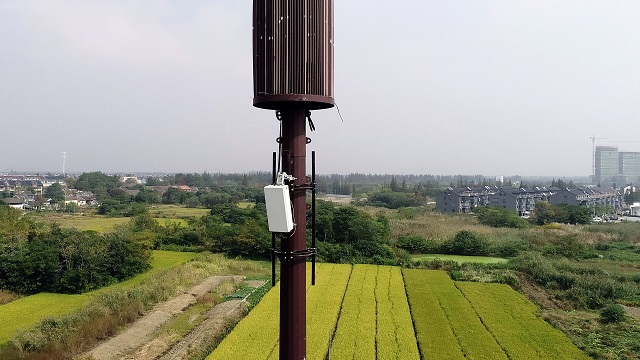Mobile operators’ 5G Capex will decline slightly in 2020, according to the latest Analysys Mason report.
 Analysys Mason said 5G Capex will bounce back in 2021, but the scale will be dependent on new business demand.
Analysys Mason said 5G Capex will bounce back in 2021, but the scale will be dependent on new business demand.
“Capex for 5G network will be 7 percent less than our pre-COVID-19 forecast. 5G Capex will bounce back in Q4 2020 and into 2021, and it will be 9.7 percent greater than our previous forecast for 2021,” says Caroline Gabriel at Analysys Mason.
Total mobile Capex will decline sharply, and some non-5G investment will be lost as mobile operators intensify their efforts to capitalise on their existing assets.
Most operators will remain committed to their existing overall Capex for the next year or so. Mobile operators will make reassessment of priorities. Telecoms, especially Europe, will be spending in favour of FTTP or 4G expansion at the expense of 5G.
Slow demand is likely to persist for a longer period than the network disruption and will drive operators to intensify the focus of their 5G strategies on cost reduction rather than new, enterprise-driven revenue streams.
Research firm Dell’Oro Group said the mobile core network market grew 10 percent year over year to nearly $8 billion for the trailing four quarters ending in Q1 2020. Growth is expected to accelerate over the next four quarters due to 5G Core deployments.
“Our outlook has become more positive, especially since the Chinese service providers accelerated their plans for 5G Core deployments,” said David Bolan, senior analyst at Dell’Oro Group.
China Mobile and China Unicom have completed their 5G Core tenders, and plan to launch 5G service early in Q3. “We expect other Chinese service providers will follow very soon. This has raised our outlook to an anticipated growth of 14 percent year over year for the trailing four quarters ending in Q1 2021,” David Bolan said.
Suggestions
Governments around the world should emulate the Chinese government and include 5G in their stimulus funding and other recovery programs, Analysys Mason said.
Government in the USA and elsewhere have suggested that 5G build-outs will be part of such initiatives.
Operators in China will spend 14/5 percent more than previously planned on their 5G roll-outs in 2020, thanks to support from various economic recovery initiatives.
5G revenue streams
Many mobile operators were hoping to use 5G to monetise the demand for improved network performance from certain customer segments. This will now be harder to achieve. There are indications that some niche consumer use cases such as gaming and live-event streaming will emerge stronger without making much effect on the business case.
Many operators were planning to target business sector to generate incremental revenue as part of their 5G investment case from 2021 or earlier. They will put on hold services such as private networks, smart manufacturing and IoT.
Mobile operators will need to intensify their focus on 5G as a driver of cost efficiencies in order to make the case for investment in the short term. Spectral efficiency and virtualised architecture may enable them to support higher capacity at lower cost, while switching off legacy networks.
Covid-19 has resulted into delays in the finalisation of the next release of the 3GPP standards. There will be delay in spectrum auctions in some countries. It may provide a breathing space for operators.
Mobile operators will be happy to cut their marketing budget, generate more mileage from FTTx and 4G. They can now wait for more-efficient 5G platforms (notably the cloud-native core) to become mature.
There will be demand for 5G-driven consumer services such as cloud gaming. Operators should be able to generate new revenue in the areas where 5G can be proven to help this process (notably in telehealth) from 2021 onwards.
Some operators provide enhanced mobile broadband (eMBB) services to deliver capacity and cut some of the strain caused by their heavy data users. Others offer a combination of eMBB together with fixed-wireless access (FWA) services.
MNOs want to position their 5G networks and develop tariffs to target the high-value end of the market in order to drive an increase in ARPU.
MNOs in South Korea and China have developed strategies to migrate 4G subscribers to 5G, such as the increased bundling of value-added propositions and the delivery of unlimited data bundles with slight premiums over 4G tariffs, says Roberto Kompany at Analysys Mason.
These MNOs are also using 5G to broaden their market reach and are increasingly targeting the enterprise segment to address use cases beyond just communications, such as the remote control of heavy machinery.
3 April 2020 was the 1-year anniversary of the first 5G network launches by the three mobile network operators (MNOs) in South Korea.
Another Analysys Mason research report indicated that roughly 73 MNOs in 41 countries have launched some flavour of 5G network.
Frost & Sullivan’s recent analysis said the increasing implementation of 4G and 5G networks will lead to steady growth in demand for direct current (DC) power systems. DC power systems revenue is expected to drop in 2020 due to the COVID-19 pandemic.
DC power systems will likely rebound to pre-pandemic levels as early as 2021 and rise at a CAGR of 4.6 percent to $5.5 billion by 2025. Unit shipments are expected to grow at a CAGR of 2.7 percent between 2019 and 2025, increasing from 895,000 units to 1.04 million.
“Telecom base stations in off-grid areas or in areas that lack proper power supply also present a large market opportunity for DC power systems, which can be coupled with renewable energy sources,” said Manoj Shankar, senior research analyst, Energy and Power Systems Practice at Frost & Sullivan.
Baburajan K
